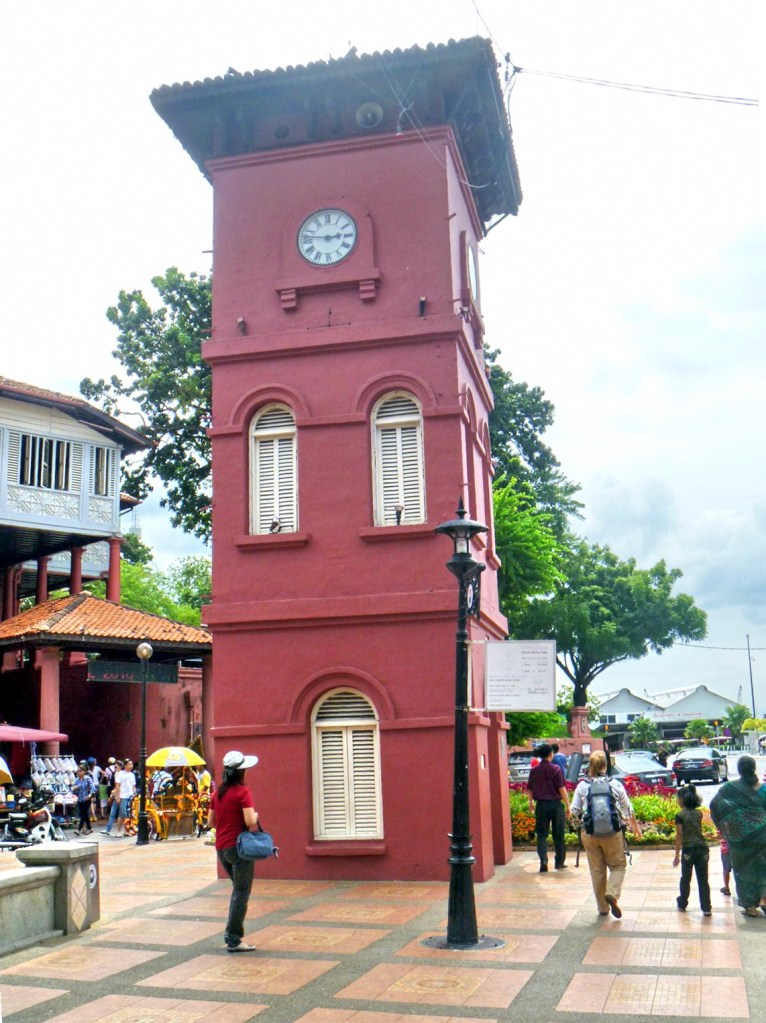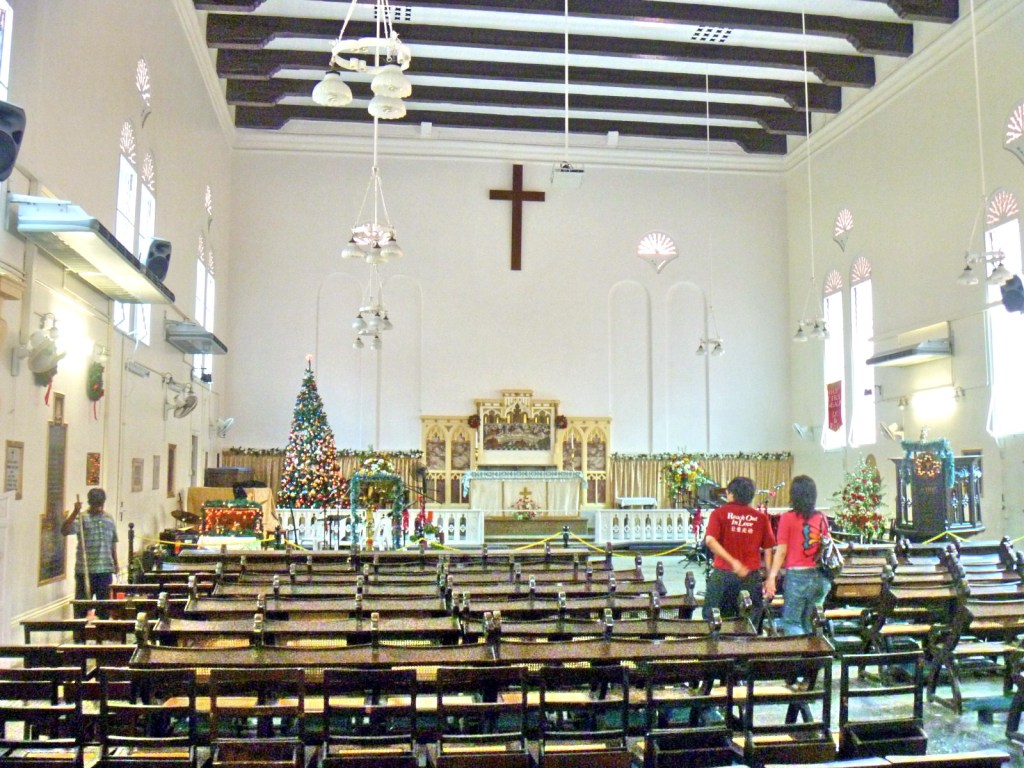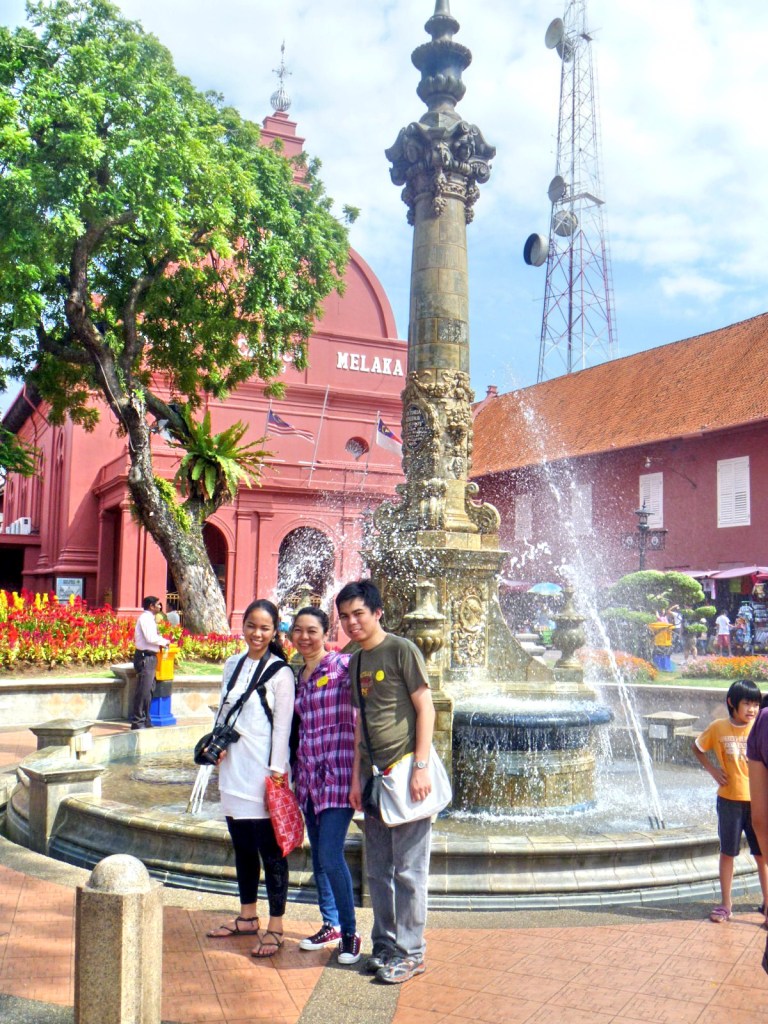From the ruins of the Church of St. Paul, we went down St. Paul’s Hill, to picturesque and postcard pretty Dutch Square (also called Red Square). Along the way, we passed the Democratic Government Museum (Muzium Pemerintahan Demokrasi), formerly Melaka’s State Legislative Assembly building.
At the square, the port-red theme (originally painted as white, it was repainted as such in 1911) predominates with the buildings around the square as well as the Tang Beng Swee Clock Tower (also called the Red Clock Tower, it was erected in 1886 to honor the generous Chinese tycoon Tan Beng Swee).
The massive Stadthuys, built between 1641 and 1660, is a reproduction of the former Stadhuis (town hall) of the Frisian town of Hoorn in the Netherlands which existed from 1420 until 1796. This building was the official residence of the Dutch governor and his deputy. Believed to be the oldest Dutch building in the East, this preserved example of original Dutch architecture has solid doors and louvered windows. Now the Museum of History and Ethnography (converted as such in 1982), it exhibits traditional wedding clothes and artifacts of Melaka, dating back to its days of glory.
Nearby is Christ Church, the oldest functioning Protestant church in Malaysia. Built in 1753, in the Dutch Colonial architectural style, as the Bovenkerk (High Church), the main parish church of the Dutch Reformed community, it was re-consecrated in 1838 with the rites of the Church of England and renamed Christ Church. After the British takeover of Malacca, its original Dutch windows were reduced and ornamented. The porch and vestry were built only in the mid-19th century.
This church, measuring 25 m. (82 ft.) by 13 m. (42 ft.), has a roof covered with Dutch tiles, walls of brickbuilt on local lateriteblocks then coated with Chinese plaster, and floors paved with granite blocks originally used as ballast for merchant ships. Inside are hand-crafted church benches, joint-less ceiling skylights, a copper replica of the Bible, a headstone written in the Armenian language and a replica of “Last Supper” made with glazed tiles and located over the altar. Its 12 m. (40 ft.) high ceiling has 15 m. long beams made from a single tree.
Between the two buildings, right in the middle of Dutch Square, is the Queen Victoria Diamond Jubilee Fountain, probably one of a few functioning colonial water fountains in Malaysia. Erected in 1904 with English marble, it commemorates the queen’s 60th anniversary (Diamond Jubilee) on the British throne.
The Malaysia Youth Museum & Art Gallery (Balai Senilukis Melaka), between Christ Church and Laksamana Road, was built in 1784 as the Dutch Administrative Complex. In 1826, it was converted into the Malacca Free School and, in the 1920s, was renovated to be a 2-storey building to be later used as a post office before conversion into a museum.








you are truly a just right webmaster. The site loading pace is incredible.
It sort of feels that you’re doing any distinctive trick.
Also, The contents are masterwork. you’ve done a great job
on this matter!